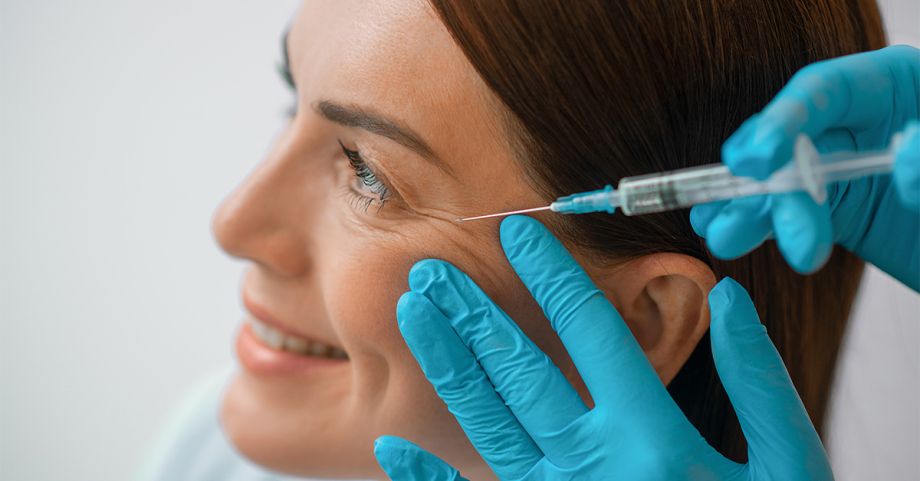
The popularity of minimally invasive dermal fillers has surged over the past few years. According to the American Society of Plastic Surgeons’ latest statistics, relatively new hyaluronic acid-based fillers like Juvederm® and Restylane® experienced a 70% uptick in patient use between 2019 and 2022. Patients are also trying more recently introduced, non-hyaluronic-acid-based fillers like Radiesse® and Sculptra®, according to the Society’s numbers.
With so much interest in these novel anti-aging fillers, you might think that Botox®—one of the first minimally invasive facial wrinkle reduction treatments—has been relegated to the cosmetic industry’s dustbin of history. However, that assessment would be wrong, as Botox® numbers surged even more—73%—than its competitor filler numbers between pre-pandemic 2019 and 2022.
Given the many minimally invasive advancements in treating lines, wrinkles, lost skin volumes, skin laxity, and other signs of aging, what explains the enduring popularity of Botox®? Well, the medical practitioners and aestheticians at Southwest Florida’s Tru Glō Medspa have offered clients Botox® since opening our Naples-based medical spa. It has long held status as one of the most frequently requested treatments at our med spa, and we expect it to retain its popularity in the years to come. Let’s take a closer look at what exactly Botox® is and what it might be able to do for you.
What is Botox®?
As a minimally invasive, injectable cosmetic procedure, Botox® is used to reduce the appearance of facial wrinkles, particularly forehead lines, glabellar frown lines, and crow’s feet. It is also FDA-approved to treat neck spasms, migraines, strabismus (lazy eye), hyperhidrosis (uncontrollable sweating), and urinary incontinence.
Botox® is a neurotoxin derived from the same bacteria responsible for botulism-related food poisoning. First isolated in the 1940s, researchers realized it could be used to paralyze facial muscles. Scientists initially studied Botox® as a treatment for strabismus, and while conducting research on monkeys, realized that it reduced the appearance of wrinkles between the eyes. Allergan Aesthetics conducted additional research on this distinct effect and secured FDA approval for its cosmetic use in April 2002.
Upon its subsequent release to the cosmetic medical field, Botox® generated tremendous buzz and earned the company over $400 million in net sales that year. While many people were discrete about using Botox® to reduce their visible signs of aging, some celebrities touted its effectiveness. Sharon Osbourne received Botox® injections in front of a live TV studio audience, and Joan Rivers called it a “miracle in a needle.” As of 2021, Botox® net sales had reached almost $4.5 billion, and market researchers believe sales could rise to over $5.5 billion by 2028.
How Botox® Works
As a neurotoxin, Botox® blocks nerve ends that signal muscle contraction, which causes the muscles to relax. This, in turn, diminishes the appearance of wrinkles in the overlying skin, especially dynamic wrinkles that form over time due to repeated facial expressions.
Botox® Treatment Areas
To reduce the visible signs of facial aging, Botox® is most effective at diminishing the appearance of forehead lines, glabellar frown lines, and crow’s feet. Because of the smoothing action caused by the muscle relaxation, it can also be used to treat static wrinkles and lines, though dermal fillers may prove more effective. Some patients also use it as a preventative treatment because the relaxed muscles help defer the development of dynamic wrinkles.
How Long Do Botox® Results Last?
The duration of Botox® age-defying results depends on the injection site, dosage, and each person’s unique metabolism, which metabolizes the neurotoxin at varying rates over time. On average, patients experience results for three to four months, though some retain noticeable results for six to nine months.
Botox® Versus Injectable Dermal Filler
Because Botox® and dermal fillers are both injectable treatments, some people are confused about which one might be right for them. To distinguish them, know that Botox® paralyzes the underlying facial muscles to decrease and prevent wrinkle and line formation. Dermal fillers decrease the appearance of wrinkles and lines by restoring volume within the skin. If anything, the two treatments can complement each other, with Botox® being an effective treatment for dynamic lines on the upper half the face, and fillers boosting volume and reducing wrinkles and lines on the lower half.
Schedule Your Botox® Session with Tru Glō Medspa Today
With over two decades of proven effectiveness in reversing the visible signs of aging, Botox® remains one of the most popular minimally invasive cosmetic treatments. To learn more about how Botox® can help reduce and prevent the appearance of your facial lines or to discuss any of our anti-aging skin treatments, contact our Naples, Florida-based medical spa through our website’s contact page or by calling 239-919-7009.